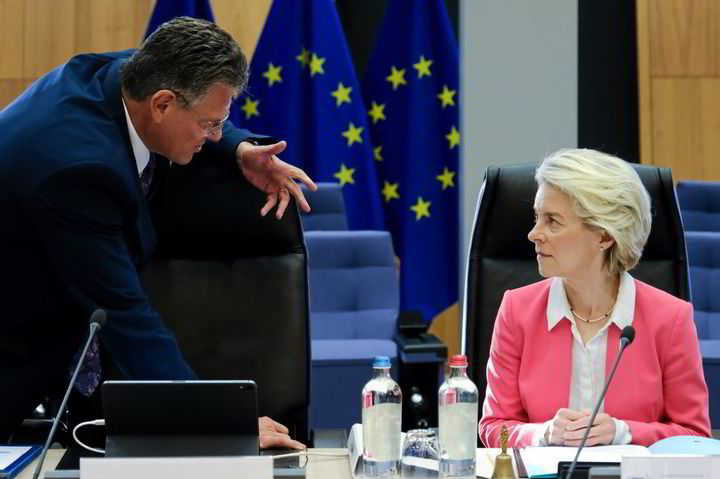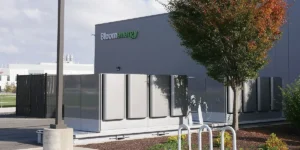EXCLUSIVE | ‘European Commission is considering Contracts for Difference for green hydrogen offtakers’

The European Commission is considering the introduction of EU-wide Contracts for Difference (CfDs) to subsidise the purchase of green hydrogen by offtakers, according to the CEO of influential trade association Hydrogen Europe.
Jorgo Chatzimarkakis tells Hydrogen Insight that discussions on the idea have been taking place “behind the scenes”.
Such a scheme would, in simple terms, ensure that green hydrogen is no more expensive for a buyer than grey H2 made from unabated fossil fuels, or possibly, depending on the framework, no more expensive than the equivalent amount of natural gas that it will replace.
The idea already has a European precedent. In June, Germany unveiled plans to introduce Carbon Contracts for Difference to encourage industrial polluters to switch to green hydrogen, with a budget running to the “mid double-digit billion [euro] range”.
There is a concern in the EU that even though the production of green hydrogen is being subsidised through an auction system, that may not reduce the price of the resulting renewable H2 to the point where it becomes affordable for potential users.
Further subsidies may therefore be required to ensure that the green hydrogen produced is actually purchased and used to reduce greenhouse gas emissions.
Article continues below the advert
How might it work?
Contracts for Difference essentially give recipients a top-up subsidy that represents the difference in cost between the green option and the existing polluting option.
How that would work in practice for green hydrogen purchasing would be slightly different to standard CfDs, which are normally applied to production, rather than consumption.
For example, CfDs for offshore wind production in the UK are based around a guaranteed “strike price” for all energy sold on the wholesale market on a per-MWh basis.
The project owner immediately gets paid the market price. If that is lower than the strike price, the government will provide a top-up payment to ensure that the owner receives the strike price. If the wholesale price is higher than the strike price, the owner has to pay the difference back to the government.
For example, let’s say the strike price is $50/MWh. If the wholesale price is lower, say $20/MWh, the project owner will receive the $20/MWh from the market, plus a top-up payment from the government of $30/MWh. If the market price was $75/MWh, the project owner would pay the government $25/MWh, so it ends up with its strike price of $50/MWh.
A Carbon Contract for Difference (CCfD) is slightly different, in that it is based around the carbon price, rather than wholesale market prices.
In a CfD based around usage, the wholesale price of grey hydrogen or natural gas would vary as the price of gas goes up and down. But buyers of green H2 would pay the same set “strike price”, regardless of the wholesale gas market, and the subsidy they would receive would therefore go up and down accordingly.
And, according to Chatzimarkakis, the EU is also considering making it a CCfD for green hydrogen users, so it would therefore be based around the variable price of carbon allowances in the EU’s Emissions Trading System. Of course, that would only be open to industries that have to buy carbon allowances, such as steel, other heavy industries and power plants.
And because of EU rules around state aid and common market practices across the bloc, it would make more sense for such subsidies to be standardized throughout the EU and be organized through the European Hydrogen Bank.
Chatzimarkakis explains: “Imagine you are an offtaker, such as [German steel producer] Salzgitter, you need hydrogen to go green. And you go to your government and say, ‘thanks very much for the capex support, I now have DRI [ie, equipment set up to produce direct-reduced iron made using green H2], so I need [renewable] hydrogen. But I cannot afford it, so I’m out.
“So the German government says, ‘I’ll give you the difference… but I need to respect European rules. So I’ll ask the [EU] hydrogen bank to help make this auction for my steel companies’.”
Global Gateway and green bonds
The EU has promised billions of euros of funding to help developing countries ramp up green hydrogen production for export to Europe, under its Global Gateway initiative.
Money has so far been pledged for H2 production in Brazil, Argentina, Chile, Kenya, and Namibia, but it has not been clear where the capital would come from.
Chatzimarkakis is convinced that the cash will be raised from green bonds issued by the European Central Bank and the European Investment Bank, saying that he had discussions on the matter last week.
A bond is basically a loan that the borrower — in this case, a governmental body — has to pay back over a set period of time upon “maturity”. It differs from a standard loan in that anyone can buy a bond and therefore become a lender, and receive a fixed (or variable) interest rate on their investment over time.
A green bond is simply a name given to bonds that fund green, climate-friendly projects.
This will “absolutely” be the method of funding the Global Gateway initiative, says Chatzimarkakis.
“It’s not that you would be investing into something which doesn’t serve a concrete and profitable product,” he says. “There’s a product, there’s an asset, there’s a pipeline, there’s a port. It’s very clear.”





